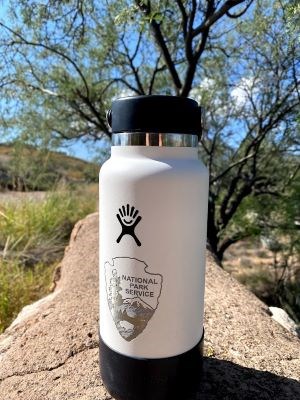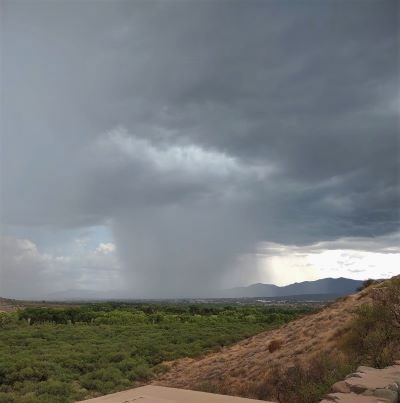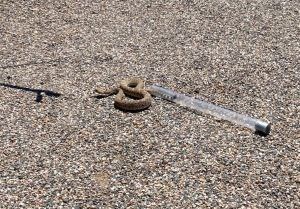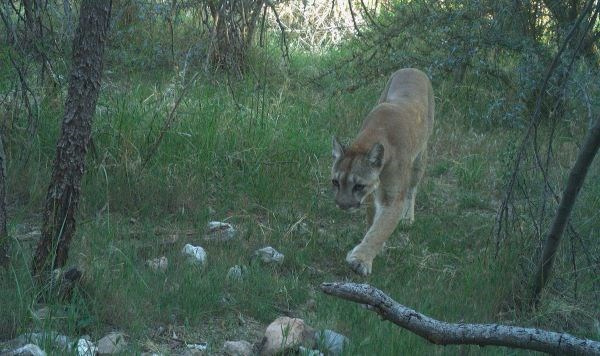Dial 911 in EmergenciesCall to report accidents, fires, or life-threatening emergencies. Cell phone coverage exists throughout most of Tuzigoot National Monument but can be spotty in some areas. Emergency calls will usually go through even if your phone says you don't have service. Desert SafetyRemember to stay on the trails while at Tuzigoot. Desert soils are extremely fragile, most of the plants have spikes or spines, and the wildlife at Tuzigoot includes several species of venomous snakes and arachnids. Staying on paved surfaces will greatly help keep you safe! 
NPS Photo / Rachel Wilkin WeatherHeatSummer high temperatures range from 95° to 115°F (35° to 46°C) and temperatures are often at least 90°F (32°C) for about 5 months of the year. When visiting the Verde Valley, you are likely to experience hot, dry weather with little cooling relief at night. There is no shade on the Pueblo Trail, so bring water, sunscreen, lightweight clothing, and a hat to keep you cool. WaterEven though our trails are short, water is always important to bring in the desert. The elevation of the monument is 3500 ft / 1050 meters and there is very little shade, which contributes to dehydration. On hot, dry, summer days, you should drink at least 1 liter of water per hour of hiking, although this amount can be more for some people.

NPS Photo / Demii Grant Monsoon SeasonWhen it's not scorching outside in the summer, Arizona is known for its monsoon seasons! On average, July through September can be the wettest months of the year for the park, receiving more than half of the annual precipitation. Monsoons are sporadic and very hard to predict, sometimes they only bring thunder and lightning while other times they drench the landscape. Park trails are closed for 30 minutes following any lightning strikes detected five miles or less from the park.Check the local forecast before your visit. What to WearIn addition to ensuring that you get adequate water and rest, what you wear is important for a visit to the desert! Even though Tuzigoot does not have long trails, there is very little shade, and it can get hot just walking back to your car! So remember: have a hat and sunscreen with you at all times. Light synthetic clothing helps wick away moisture, keeping your body cooler while outdoors. We recommend wearing long sleeves to keep your sun exposure down, and protect your arms from bushes and thorns. Finally, temperatures in the desert can fluctuate drastically over the course of a day. Packing and wearing some layers is highly recommended.Wildlife and PlantsA diverse array of animals call Tuzigoot home and it is each visitor's responsibility to keep themselves safe by watching where they place their hands and feet. Keep a safe distance from wildlife at all times. Again, staying on all paved surfaces greatly increases the likelihood of having a safe and enjoyable experience in the park.
RattlesnakesRattlesnakes are fairly common at Tuzigoot from April through September. Snakes help keep rodent populations under control. Many people are afraid of them, but they have no interest in us as long as we leave them alone. The best advice is to not put any body part anywhere your eyes haven't been first. If you see a rattlesnake on the trail, be sure to let a staff member know as soon as possible. Rangers have been specially trained to relocate snakes in a way that is safe for them and the snake. Never attempt to handle or move a snake on your own. Even non-venomous species will bite if they feel threatened. 
NPS Resources Mountain LionsAlthough mountain lions are generally shy and avoid human interactions, there is a healthy population in the Verde Valley. Especially if you are hiking the Tavasci Marsh Trail, be aware of mountain lions. If you encounter one, make your presence known with loud noises and try to appear larger than normal. Never approach a mountain lion, try to back away slowly, and refrain from running away. CactiMany desert plants are spiny. Some species of cacti, such as cholla, have spiny segments easily detach from the plant. Others like prickly pears have glochids, tiny spines that can be too tiny to see or remove from your skin. Cactus fruits also have spines. |
Last updated: August 10, 2025
